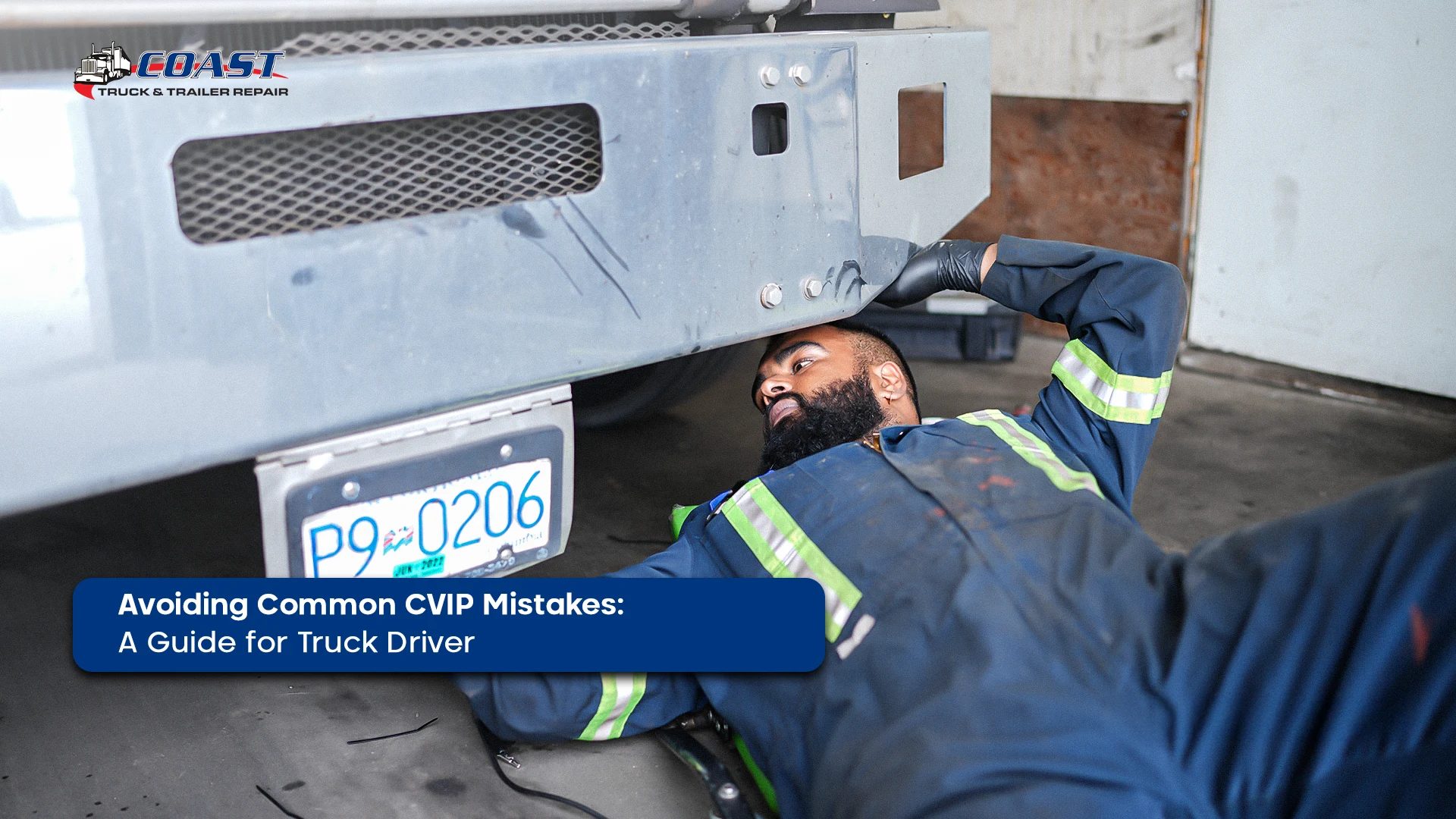If you are a truck driver, then you already know how important CVIP (Commercial Vehicle Inspection Program) checks are. But did you also know that many drivers fail their inspections simply because of small errors?
Avoiding Common CVIP Mistakes is not just about passing an inspection, but it’s all about staying safe, legal, and on the road without delays. Whether you’re an owner-operator or manage a fleet, avoiding CVIP should be part of your routine maintenance routine.
In this blog, let us discuss the most frequent CVIP mistakes, why they happen, and how you can avoid them.
What is CVIP?
CVIP stands for Commercial Vehicle Inspection Program, which is a mandatory inspection that ensures trucks and buses meet the road safety standards. If your vehicle weighs over 4,500 kg in BC, you are legally required to pass this inspection annually (for trucks.
Failing the CVIP doesn’t just mean downtime; it can also result in expensive repairs, penalties, and lost contracts. Avoiding common CVIP mistakes can help protect your income, reputation, and safety.
1. Neglecting Pre-Inspection Maintenance
One of the most common mistakes truckers make is showing up for a CVIP without properly preparing the vehicle. Minor wear-and-tear issues like bald tires, cracked lights, or worn brake pads are easy to fix problems in trucks, but they often lead to CVIP failures simply because they are mostly ignored.
2. Overlooking Brake System Issues
Brakes are one of the top failure points during CVIP inspections. Even small brake problems like loose parts or worn-out linings can get your truck flagged. It might feel fine, but it can still fail a check.
Tip: Regular brake inspections and adjustments, especially on air brake systems, can save you time and money both. Brake components wear unevenly, so don’t assume they’re good just because the truck stops.
Remember: Avoiding common CVIP mistakes starts with detailed system checks.
3. Electrical Problems and Lighting Issues
Another area where CVIP failures are common is Lights and wiring.
Truckers often forget to check turn signals, reflectors, and trailer light connections. A single non-functional light can trigger a failure, especially if it’s a brake or clearance light.
Tip: Before inspection day, test every light on your truck. Clean the dirty lenses, replace dead bulbs, and fix exposed wires. Also, ensure trailer plug connections are secure and corrosion-free.
4. Poor Vehicle Cleanliness
It might surprise you, but showing up to a CVIP inspection with a dirty truck could lead to issues. Inspectors need to see your vehicle in clean and good conditiion. If mud, grime, or snow is covering suspension or brake parts, it might lead to delays or failure.
Tip: Give your truck a proper wash before inspection. Pay attention to the undercarriage and wheel wells.
Being clean is professional and it helps in avoiding common CVIP mistakes due to poor visibility.
5. Ignoring Leaks and Fluids
Dripping fluids under your truck are a big red flag. Whether it’s oil, coolant, or fuel, leaks suggest a lack of maintenance and can result in automatic CVIP failure.
Tip: Check under the hood and under the truck for any signs of active leaks. Replace gaskets, tighten fittings, and top up all fluids before heading to your inspection.
Taking care of leaks goes a long way in avoiding common CVIP mistakes that delay your operations.
6. Worn-Out Suspension or Steering Components
Loose or worn suspension parts are another cause of failure. CVIP inspectors often find issues like damaged U-bolts, cracked spring leaves, or loose kingpins.
Tip: Have a mechanic check the suspension system during your regular maintenance. Listen for clunks or rattles while driving these could point to problems.
Staying ahead on these issues is part of avoiding common CVIP mistakes that could put your vehicle out of service.
7. Not Keeping Records
Even if your truck is in perfect shape, missing paperwork can delay or fail a CVIP. You need proof of previous repairs, maintenance logs, and inspection history ready.
Tip: Keep a binder or digital folder with all your service and inspection records. This shows you’ve maintained your vehicle responsibly.
Organization is an underrated part of avoiding common CVIP mistakes.
Conclusion
CVIP inspections aren’t meant to catch you off guard—they’re designed to keep roads safe. By taking the time to prepare, inspect, and maintain your vehicle, you’ll not only pass your CVIP, but you’ll avoid breakdowns, fines, and frustration.
The key to avoiding common CVIP mistakes is preparation. Start early, check thoroughly, and treat your truck like your business depends on it—because it does.
Frequently Asked Questions
Q1. How often should I get a CVIP inspection?
A: In most Canadian provinces, commercial vehicles need CVIP inspections annually (every 12 months). Buses often require them every 6 months.
Q2. What’s the most common cause of CVIP failure?
A: Brake issues, lighting failures, and suspension problems top the list. Regular checks can help in avoiding common CVIP mistakes.
Q3. Can I do anything to prepare before the inspection?
A: Yes. Do a walkaround, check lights, brakes, fluids, and fix visible problems. Clean your truck and have your records ready.
Q4. What happens if I fail a CVIP inspection?
A: You’ll be issued a report with defects and usually a time limit to fix them. Your vehicle may be placed out of service until it’s re-inspected.

